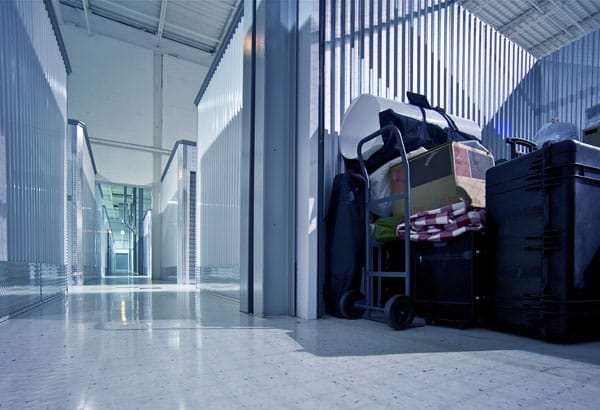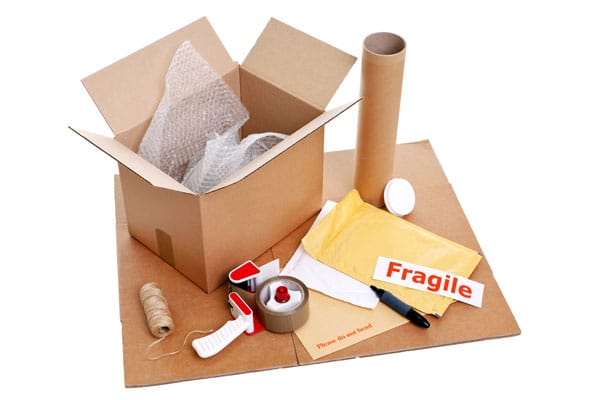If you need to store some of your items away for a while, renting a self-storage unit is your best option. Storage units provide a safe place where to keep your belongings until you’re ready to take them back – it’s very convenient, easily affordable, and great for your peace of mind.
To ensure that your belongings will stay safe and sound while in storage, though, you need to choose a good storage facility (secure, well-equipped, and well-maintained), rent an appropriate storage unit (the right size for your needs, climate-controlled, etc.), and prepare your items properly (pack them in a safe and efficient manner).
When packing for storage, you need to 1) organize your items in a systematic and practical way, so you can easily find what you need and 2) provide your belongings with the best possible protection against dust, dirt, moisture, and potential damage.
Here are some expert tips on how to pack items for storage to help you achieve both of these goals:
How to prepare items for storage
Before you can start packing your belongings for storage, you need to take some preparatory steps that will help you establish order, provide your items with proper insurance, and ensure that you will find them in excellent condition when you take them out of storage:
- Organize the items you plan to put into storage – group them by type (books, clothes, office supplies, etc.), material (glass items, china items, fabric items), vulnerability to damage (fragile items, sensitive items, non-breakable items), season (winter gear, summer accessories, etc.), purpose (tools, entertainment items, collectibles, keepsakes, etc.), frequency of use (commonly used items, rarely used items, specialty items), room/place they belong to (garage items, patio items, kitchen items, etc.), or any other way that is logical and meaningful to you;
- Make a self-storage inventory list so you don’t forget what you have put in storage. Include a statement about the pre-storage condition of every item and note down the value of more expensive articles. Add photos and documents (receipts, warranties, appraisal statements, etc.) so you have evidence about the condition and value of your stored belongings in case any of them get stolen or damaged while in storage. Be sure to purchase appropriate insurance for your stored items, especially for the more valuable ones;
- Clean the items you’re going to put in storage to prevent stains from settling in and avoid bringing dust, dirt, and debris into your storage space (dust and dirt can cause damage to more delicate items, debris can attract pests, etc.);
- Make sure the items are fully dry before packing them for storage – any remaining moisture can lead to mold growth, discoloration, swelling, warping, rotting, or other kinds of water damage;
- Make sure freezers and refrigerators are completely defrosted and all water is drained from the internal mechanisms and hoses of kitchen appliances;
- Secure hoses, cables, and electrical cords to their corresponding appliances, electronics, or other electrical devices;
- Disassemble larger furniture pieces to make them safer and easier to handle – and to save space in the storage unit;
- Treat leather upholsteries and leather items with a leather conditioner;
- Wrap fragile items and other delicate or valuable items individually in soft packing paper (See also: How to pack fragile items for moving and storage);
- Let books and mattresses sit in a place that gets plenty of sunlight for a couple of days before packing them for storage.
How to pack items for storage
Once your items are properly prepared, you can start packing them for storage.
Use quality packing materials
To ensure the safety of your items while they’re in storage, you’re going to need quality packing materials that will provide your belongings with good protection – clean and sturdy cardboard boxes, plastic bins, packing paper, bubble wrap, furniture blankets, foam padding, etc.
In fact, it may be best to invest in plastic bins – they’re very strong and reliable (plastic boxes do not rip, collapse, or crush), waterproof, transparent, and easy to stack, so they provide both convenience and utmost safety. (Avoid using plastic bags though – they rip easily, cannot be stacked, and can trap moisture and cause mold to develop on your items.)
Pack your items in a safe and efficient manner
Proper packing is key to ensuring that your stored items will remain in excellent condition until you need them again, so it’s crucial to know how to pack for storage the right way:
- Pack in boxes everything that fits in a box – your items will be best protected when stored inside boxes. Be sure to pack only one kind of items in a box (only books, only toys, only dishes, etc.);
- Line the bottoms of the boxes with crushed paper to create a cushioning layer for your items;
- Place heavier items on the bottom and lighter ones on top of them;
- Fill the boxes to the top – half-empty boxes may cave in when stacked under other boxes in the storage unit;
- Be careful not to overload the boxes or make them too heavy, so they don’t fall apart;
- Provide plenty of cushioning between the items in a box and fill any empty spaces in the packing containers with crumpled paper, pieces of bubble wrap, packing peanuts, towels, old clothes, etc.;
- Seal the boxes tightly to prevent dust and moisture from getting inside;
- Label the storage containers in detail – make a list of all the items in a box and tape it to the storage container (use clear packing tape and make sure the entire label – especially the corners and edges – are securely taped on), so you know exactly what is in each box. Write FRAGILE on storage boxes that contain fragile, delicate, or sensitive items and indicate which side is up (use arrows or write THIS SIDE UP) on boxes that contain bottles, glasses, or other items that should not be turned upside down. Use a permanent marker and write in big letters, so the writings are clearly visible and don’t fade with time. Label the boxes on their sides, not on their tops, so you can see the information even when the containers are stacked over one another;
- Wrap larger items that can’t be packed in boxes (furniture pieces, kitchen appliances, etc.) in furniture blankets, regular old blankets, old sheets, drop cloths, or other appropriate covers. Use plastic wrap to secure the protective coverings in place and to provide protection against dust, dirt, and moisture. Make sure you don’t use plastic wrap directly on wood surfaces, upholstery, glass, or other delicate materials though – it may trap moisture and cause damage to your items.
Bonus tip: Know what not to put in storage
As safe and convenient as storage units may be, there are things that you should not store in them – and things that are not allowed in self-storage facilities:
- Valuables (documents, jewelry, artwork, very expensive electronics, collectibles, family heirlooms, keepsakes, etc.) – There may be an accident (fire, flooding, earthquake, etc.) or a robbery and you may lose your irreplaceable items and prized possessions. The risk is too big, so you should not put items of extremely high monetary or sentimental value in storage. If you have no choice but to store such precious items for some time, be sure to rent a climate-controlled storage unit in a very secure storage facility and to purchase appropriate insurance for your valuables;
- Hazardous items (flammable, corrosive, or explosive materials), perishable items (food, medicines, plants, etc.), and items that produce odors are illegal to store in a storage unit.
When you know how to pack for storage safely and efficiently, your stored items will remain in the same condition they were when you dropped them off, regardless of how long they stay in storage. And that’s what you want, isn’t it?









